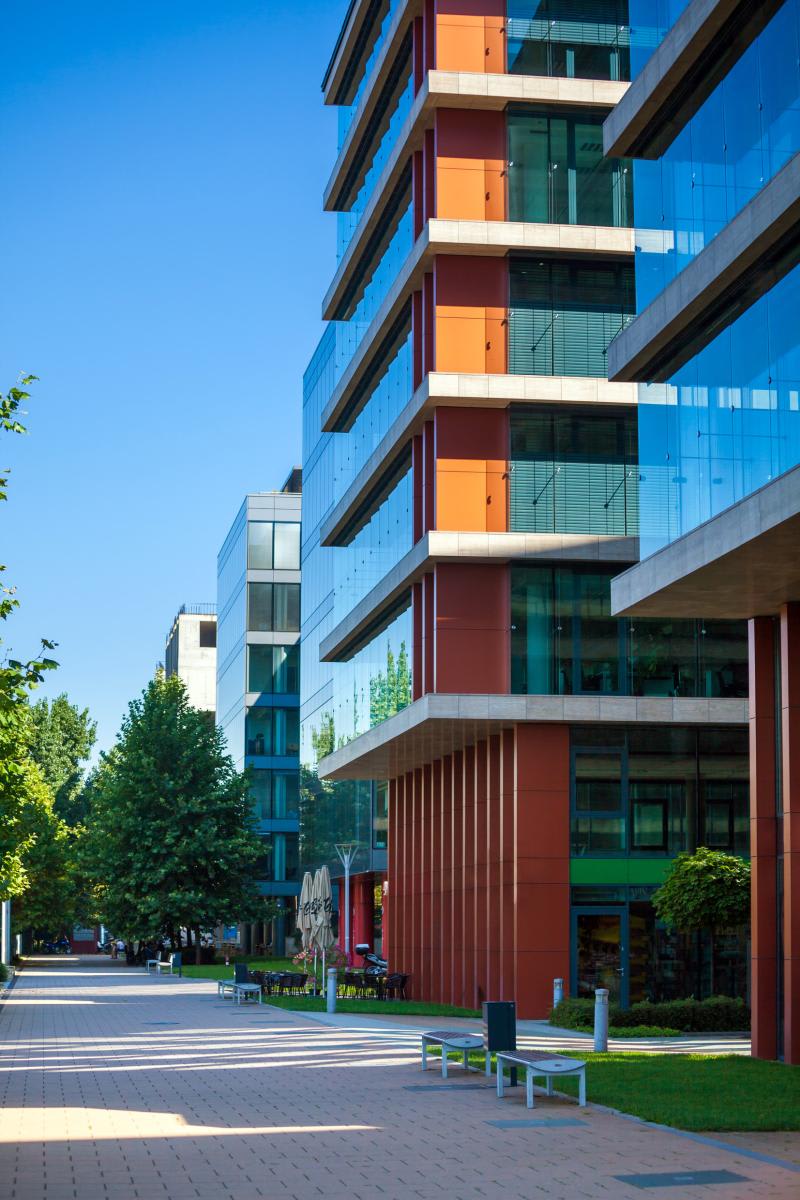AUTHOR
Construction insolvencies are on an upward trend, at a time when the demand for new homes is also rising rapidly. So where does that leave lenders, developers, builders and aspiring new homeowners in 2024?
In August 2023, the federal and state governments agreed to a target of 1.2 million new homes by 2029. Labour shortages, planning laws, building costs and decade-high insolvency levels in the construction industry are all factors that will make the delivery of these much-needed, new homes a challenge. 
According to CoreLogic, the medium to high-density sector is increasingly becoming an important tool in delivering additional housing stock for Australia's growing population, especially as households continue to congregate in metropolitan areas. The latest National Housing Finance and Investment Corporation (NHFIC) ‘State of the Nation's Housing’ report forecasts a national housing deficit of approximately 106,300 by 2027 (later upgraded to 175,000), with around 59% of the shortfall expected in the unit market.
We spoke to Brett Lord, Partner, RSM Restructuring and Recovery, to gain his insights on the current Australian construction and housing supply landscape. Brett joined RSM in late 2023, bringing with him over 20 years of experience in restructuring, corporate insolvency and advisory with a particular focus on the various property sectors within Australia.
Here are some questions Brett Lord, Director of Restructuring and Recovery has answered
“The short version is, it’s making it tougher to bring products (new homes) to the market - at a time when there’s already an imbalance between housing supply and demand."
Generally speaking, traditional project homes used to take about 14-16 construction weeks to deliver, now some are taking between 48-52 weeks. It’s just harder to get things done – with material supply issues, labour shortages, and slim (if non-existent) profit margins for builders on some projects.
Everyone agrees that we need to deliver more homes, but the current operating conditions, particularly for builders who are carrying fixed legacy contracts, are making it difficult to meet the housing supply demand.
There are so many pieces in the construction puzzle; it can be difficult to line them all up in the right spot, at the right time.
As the developer, convincing a builder to take on a project that’s semi-completed and have them see it through to completion can be difficult as they are often booked on projects for years in advance and are unlikely to want to enter a situation that involves solving someone else’s problems. Of course there are numerous warranty and risk management considerations to make on a partially completed project before taking it on.
Finding a Not To Exceed (NTE) replacement builder often means as the developer, you’ll have to pay for it – if you want certainty there'll typically be a premium margin on it from the replacement builder.”
From the lender’s perspective, they need to be across any significant changes to the delivery of the project they’re funding, including a new builder being appointed. They will also assess any additional lending requests that may result due to a change in main contractors on the project.
It definitely helps if the borrower, typically the developer, has a strong track record of delivery on other construction projects and a good credit rating; this will put them in a better position to renegotiate with lenders who are seeking certainty around timeframes, costs and the quality of the delivered end product.
In some cases, if a developer is part-way through a project and their builder goes bust, and they’ve exhausted all additional funding options, the only way to get the project completed is for the lender, the bank, to finish it. They may appoint RSM as the receiver and our team will navigate the process - helping to ensure the project can be delivered,” Brett explained.
"Everyone involved; the lender, the developer, the builder and the aspiring homeowner, naturally want to avoid risk and have the homes delivered - but it’s not always an easy or smooth process.”
“Margins for builders are often really tight - typically sitting at around 1%-2% of the project’s total value. I often see builders hoping to make extra profit on variations - which isn’t a reliable business model. And when it comes to building projects, it doesn’t take much to go wrong. Weather delays, a subcontractor or supplier going bust; that small profit margin can very quickly evaporate and become a loss."
If a builder does become insolvent, and a new builder needs to be secured by the developer, it can take anywhere between six and 12 months typically to have a new team on site.
Ultimately, when a building company goes bust, it causes delays and plenty of stakeholders are impacted - including the people who may be waiting to get the keys and move into their new home,” Brett said.
“Shoddy construction work is not being tolerated. Abiding by the National Construction Code (NCC) and individual state and territory Building Commission rules and regulations is absolutely vital for developers and builders.
There is a high-profile case reported whereby nearly 100 people who purchased defective apartments in a Western Sydney development have their contracts rescinded, deposits returned, and the apartments can not be sold again for 10 years, under a landmark agreement in late 2023. The undertaking struck between the NSW Building Commissioner and a developer in receivership, is the first of its kind and designed to serve as a caution for all stakeholders involved in the construction industry.
There are new requirements in place, for example the NSW Building Commission requests video evidence of waterproofing in bathrooms, particularly in larger developments.
"The key message that’s being sent to developers and builders is: do it once, and do it properly. If there are problems, it can cost an awful lot of money and emotional stress to fix them, and ultimately defect issues can - in some cases - lead to insolvency.”
If you are building a block of flats with 100 units, as the developer, you need to buy the land and fund the construction. As per the lending criteria, the banks usually need a high number of qualified pre-sales. Typically lenders want to see 100% Loan to Construction Cost (LTC).
If, as the developer, you’ve pre-sold 80 or 90 of your 100 units, and there are delays in construction or cost blow-outs of any kind, you can’t pass that cost on to the home consumer who has pre-purchased their unit; the additional costs have to be worn by the developer, and the builder if there is a fixed contract in place.
"I often hear of builders in these scenarios, when the project just isn’t viable for them any longer due to cost increases, just walking off the job and saying to the developer: ‘sue me.’"
As the developer, if you don’t have a builder, you can’t finish the project. Lenders of course want to see the project delivered too in order to protect their investment. Meanwhile, home consumers who are left waiting can often become increasingly frustrated, stressed, confused and angry about the situation.
"It’s in everyone’s interest in these difficult situations to assess the available options and come to a qualified solution as quickly as possible.”
“The most important element in my experience is transparency - from the outset. If you have concerns about the viability of a project, get on top of those concerns early."
Seek professional advice, and bring your stakeholders to the table proactively; that will give you the best possible chance of reaching a resolution. When the financials of a development project are getting tough to manage, act sooner, rather than later.
Safeguarding relationships and maintaining trust with stakeholders is vital to achieving the best outcome in an often very stressful situation,” Brett said.
Ready for a free, confidential chat? We’re here to help.
Whether you're a lender, developer, builder or an individual experiencing financial difficulties, our team can help you understand your options, and make informed decisions. Contact us for a free, initial call.
If you or anyone you know needs mental health support:
Lifeline on 13 11 14
Beyond Blue on 1300 224 636
Headspace on 1800 650 890
MensLine Australia on 1300 789 978





